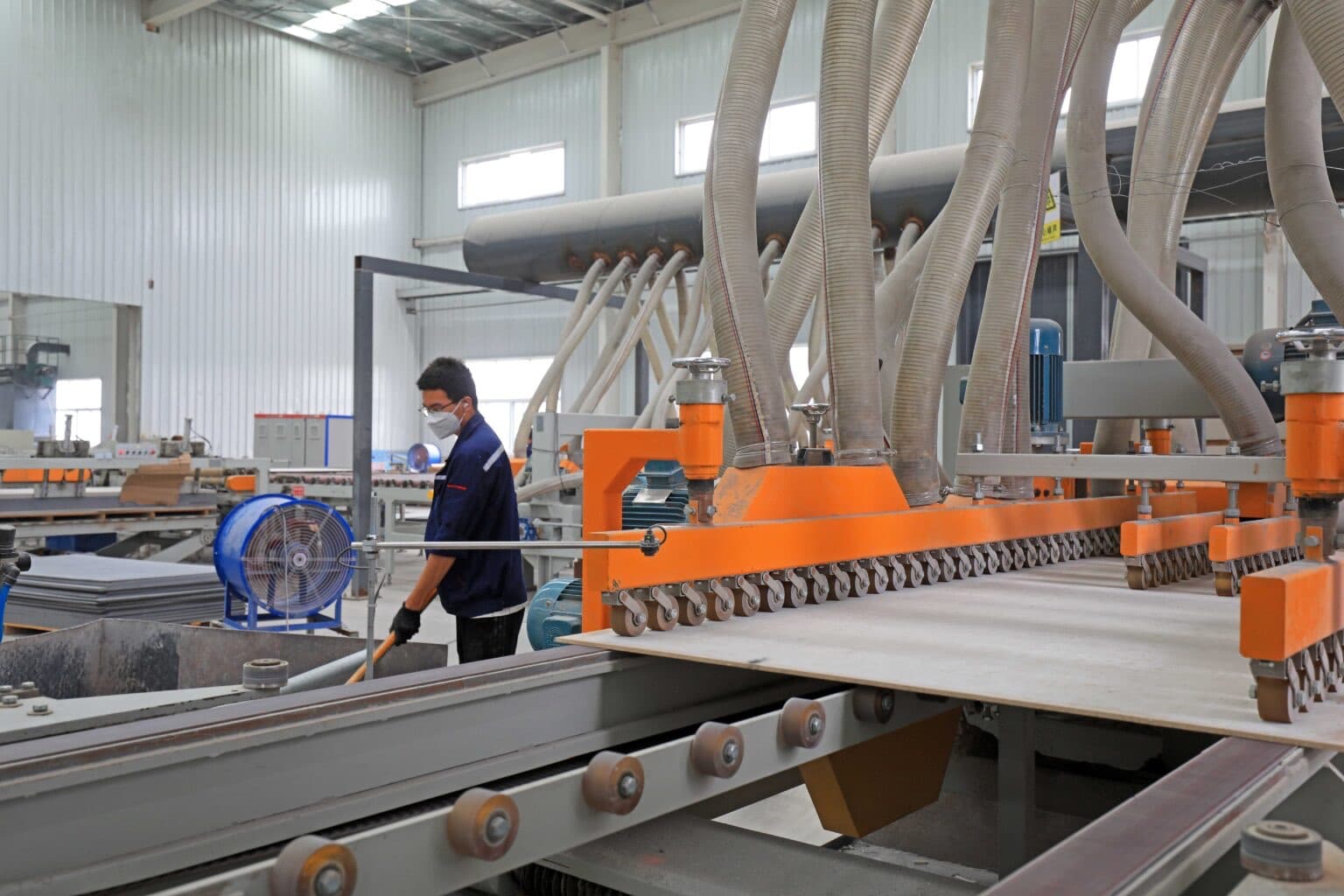Ayant travaillé sur plus de 100 projets de protection contre l'incendie - y compris des tours de bureaux, des installations industrielles et des plates-formes de transport - nous avons appris qu'il est essentiel d'effectuer la bonne coupe au bon moment. panneaux de silicate de calcium n'est pas seulement une question d'outils et d'angles. Il s'agit de savoir ce qui fonctionne dans les conditions réelles du chantier.
Ce guide n'est pas une théorie. Il s'agit d'un savoir-faire distillé que nous avons accumulé sur des chantiers de construction désordonnés, où les bords nets, les ajustements serrés et la pression du temps sont la norme.
Pourquoi le découpage mérite plus d'attention
Nous avons vu trop d'installations déraper parce que les coupes étaient précipitées ou effectuées avec la mauvaise lame. La coupe n'a pas qu'une incidence sur l'aspect de la planche.
- Le temps gagné plus tard commence ici: Une coupe nette maintenant permet d'économiser 20 minutes d'ajustement, de ponçage ou de mise au rebut d'une planche plus tard.
- L'ajustement influe sur la fonction: Un mauvais alignement est synonyme d'espaces d'air, d'ajustements lâches et de connexions faibles qui peuvent compromettre la performance de l'ignifugation.
- Les bords nets contribuent à la résistance au feu: Les bords ébréchés ou fissurés peuvent constituer des chemins de chaleur. Dans la plupart des cas, nous scellons les lignes de coupe à l'aide d'un mastic coupe-feu afin de garantir les performances.
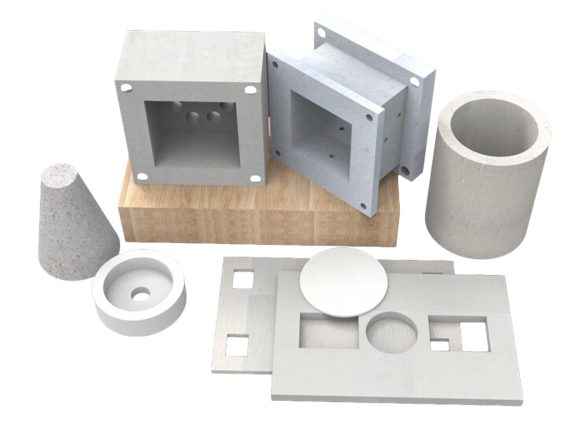
Quels sont les outils de coupe qui fonctionnent réellement sur le terrain ?
Nous avons tout utilisé, des scies portatives sur des échafaudages aux lignes CNC complètes dans des ateliers préfabriqués. Voici ce qui a toujours fonctionné :
Scies à panneaux CNC
Lorsque nous produisons des lots ou que nous avons besoin de tolérances très serrées, les machines à commande numérique sont la solution.
- Précision du guidage par ordinateur : ±0,5 mm
- Traite les profils délicats tels que les biseaux ou les découpes
- La programmation est rapide une fois que la CAO est prête
- Fonctionne bien en usine, moins bien sur les chantiers
Scies à table coulissantes
Fiable pour les coupes droites sur site ou dans les petits ateliers.
- Idéal pour les volumes moyens et les coupes rectangulaires
- Bonne répétabilité
- Plus facile de former les opérateurs
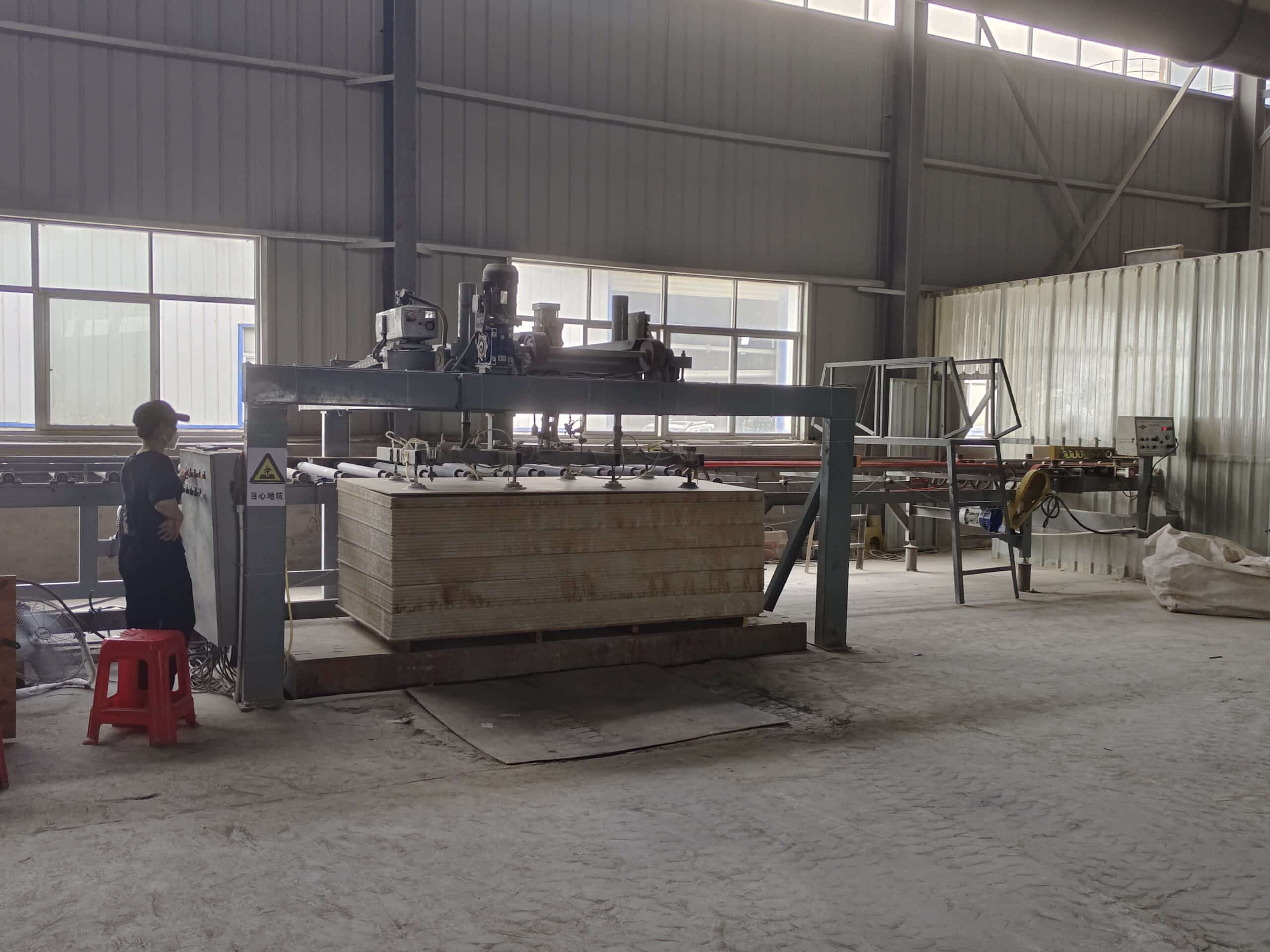
Scies circulaires portatives
Si vous coupez sur un échafaudage, dans un coin étroit ou si vous effectuez des travaux de rénovation, c'est ce que nous utilisons.
- Super mobile et adaptable
- Toujours utiliser un aspirateur et un équipement de protection individuelle (EPI)
- Nous avons l'habitude d'apporter des lames supplémentaires sur place, juste au cas où.
Note sur le monde réel: Dans les projets internationaux, nous spécifions souvent des scies circulaires portables et des aspirateurs HEPA. L'installation est simple, mais le travail est fait proprement.
Le choix des lames dépend de la densité de la carte
La densité de la planche détermine la lame qui ne la réduira pas en miettes. Voici ce qui a fonctionné pour nous :
| Densité | Type de lame | Détails |
|---|---|---|
|
300-500 kg/m³
|
Carbure à tête plate ou à dents alternées
|
Moins de bavures, meilleur dégagement des copeaux
|
|
500-800 kg/m³
|
Composite flat-top ou diamant (PCD)
|
Empêche la fissuration des bords, fonctionne pour les angles
|
|
800-1000 kg/m³
|
Diamant uniquement, dent ultra-fine
|
Nécessaire pour les planches plus dures et plus denses
|
- Pas : 3-6mm
- Taille de la lame : 350 mm standard
- Epaisseur du PCD : au moins 3,2 mm pour une longue durée de vie
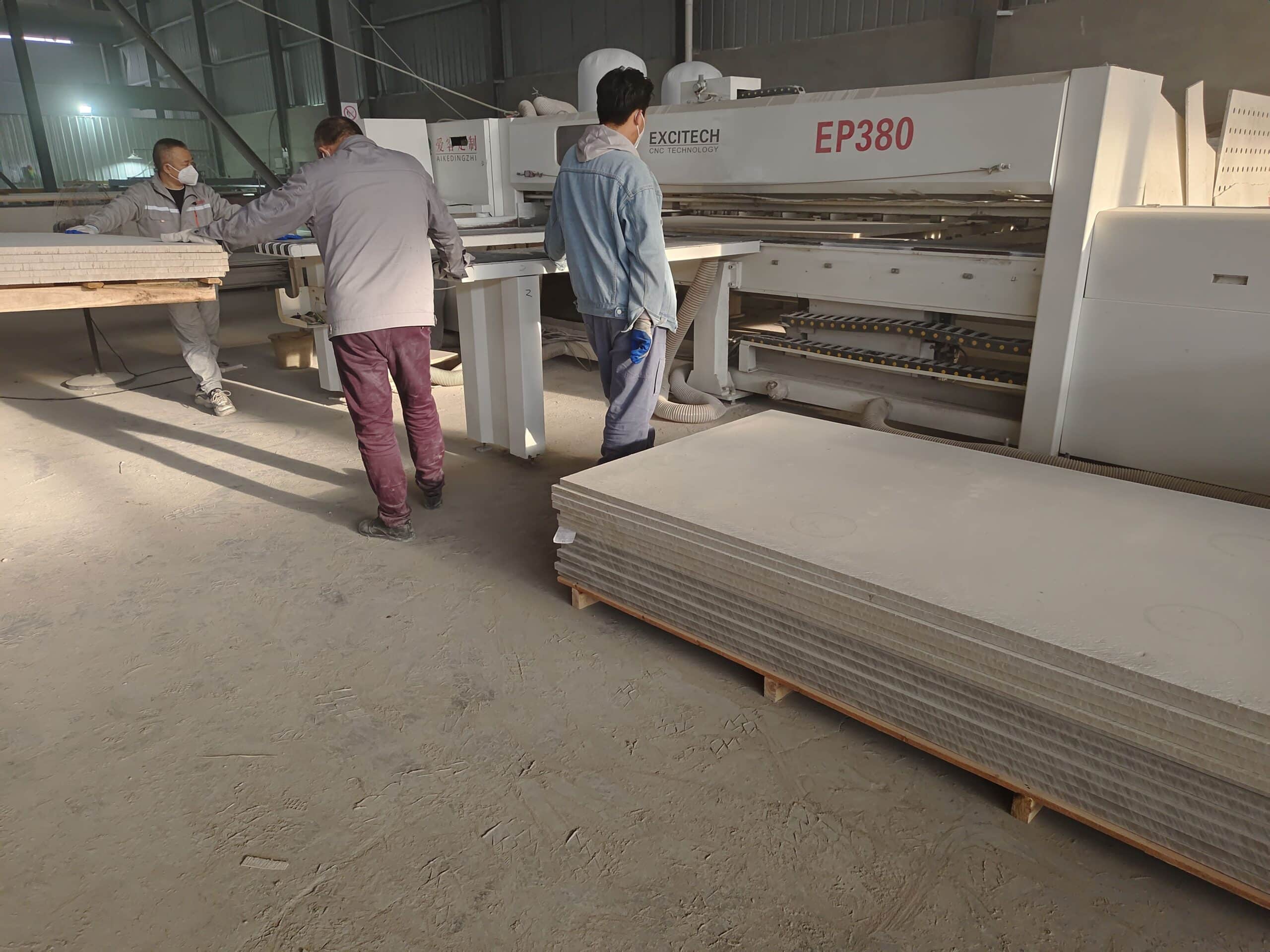
Notre processus étape par étape (qui fonctionne réellement)
Marquer la ligne
Vérifiez vos dimensions et tracez la ligne à l'aide d'une équerre et d'un mètre. Pour les parties irrégulières, nous traçons à partir d'un gabarit en carton.
Lisser le bord
Utilisez du papier de verre de grain 120 ou une débroussailleuse. Nous donnons généralement aux bords biseautés un angle de 15° - propre et fonctionnel.
Faire la part des choses
Posez la planche face vers le bas. Faites avancer la lame régulièrement le long de la ligne marquée - ne vous arrêtez pas à mi-chemin si vous ne voulez pas que les bords s'écaillent.
Vitesse d'avance : dans la plupart des cas, une vitesse de 10 à 20 m/min est idéale.
Utilisation de la CNC pour les formes spéciales ou les travaux en volume
Pour les noyaux de portes coupe-feu, les fonds d'armoires ou les panneaux perforés, le défonçage CNC est imbattable.
- Précision : ±0,15 mm pour la forme, ±0,1 mm pour le positionnement des trous
- Gain de temps : Les changeurs d'outils automatiques (ATC) facilitent les coupes en plusieurs étapes.
- Cohérence : La détection laser des arêtes permet de contrôler l'écaillage
- Des changements rapides : Nous changeons les spécifications entre les lots sans délai
Nous l'utilisons principalement pour les composants qui doivent avoir un aspect propre et s'adapter à des tolérances étroites.
Ce que nous vérifions toujours sur place
Sécurité personnelle
- Portez toujours un masque N95, des lunettes et une protection auditive.
- Couper dans des espaces bien ventilés
- Utiliser un dépoussiéreur mobile dans la mesure du possible
Sécurité incendie
- Pas de matériaux inflammables à moins de 5 mètres
- En règle générale, nous gardons une couverture anti-feu sous le poste de sciage.
Entretien des lames
- Si vous entendez des gémissements ou si vous voyez des traces de brûlure, remplacez immédiatement le produit.
- Remplacer ou réaffûter les lames tous les 400-500 mètres de longueur de coupe
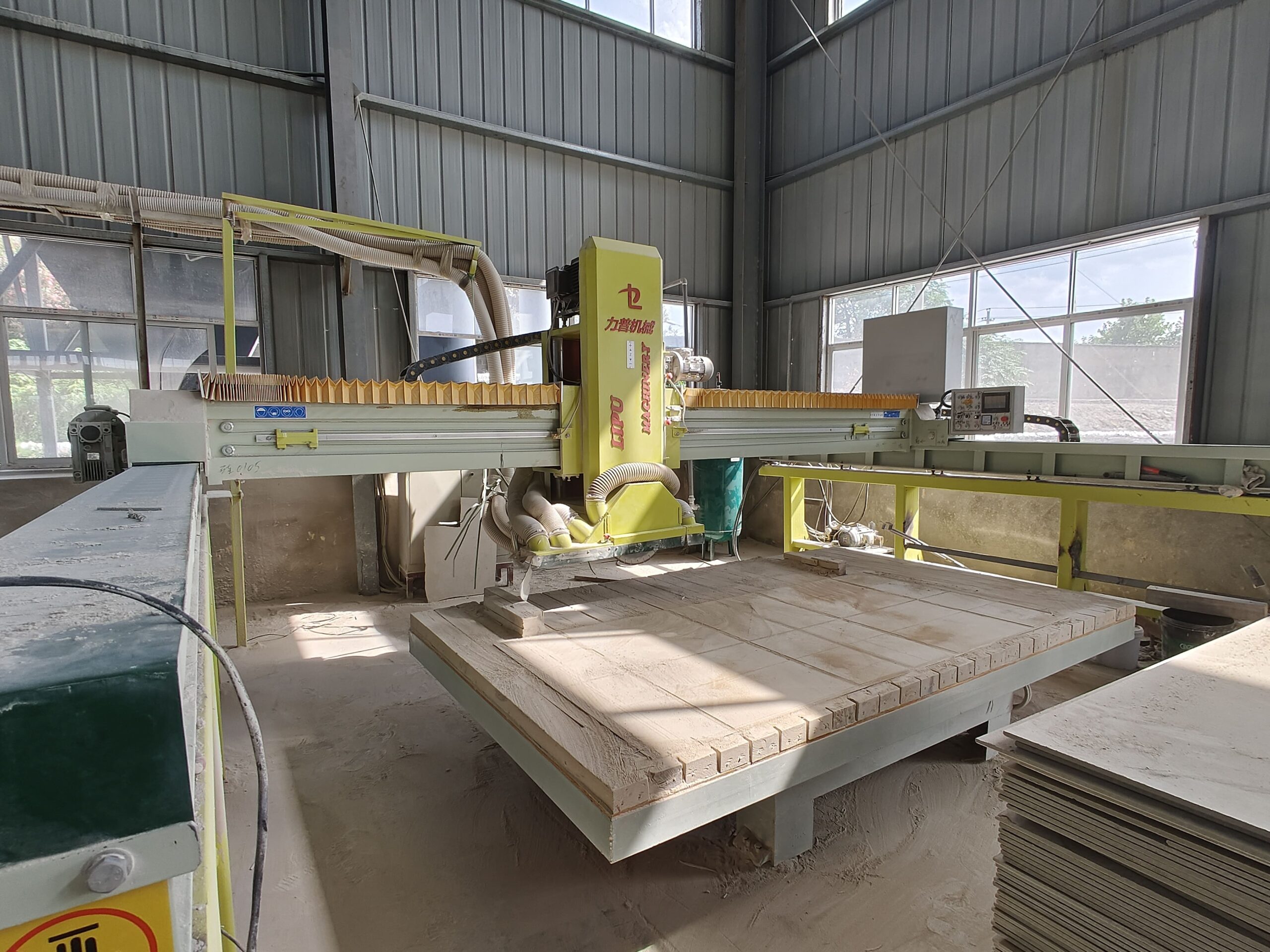
Problèmes courants et mesures prises pour y remédier
| Ce qui ne va pas | Cause probable | Ce que nous faisons |
|---|---|---|
|
Bords effilochés ou ébréchés
|
Lame émoussée / vitesse d'avance incorrecte
|
Affûter ou remplacer la lame, couper plus lentement
|
|
Les coupes ne sont pas droites
|
Le panneau s'est déplacé pendant la coupe
|
Utiliser des pinces, une table d'aspiration ou du ruban adhésif
|
|
Bords brûlés
|
Lame trop chaude
|
Ajouter du liquide de refroidissement ou réduire la vitesse
|
|
De la poussière partout
|
Extracteur faible
|
Utiliser un système de 2000m³/h au minimum
|
|
Fissures dans les coins
|
Rayon d'angle serré
|
Pré-percer et utiliser des coupes en escalier ; garder un rayon intérieur ≥5mm
|
Le mot de la fin sur le chantier
Découpage panneaux de silicate de calcium n'est pas une question de perfection, mais de cohérence, de sécurité et d'adaptabilité. En adoptant les bons réglages et les bonnes habitudes, vous obtiendrez des coupes nettes et moins de problèmes d'installation au bout du compte.
Si vous travaillez sur un projet et que vous avez besoin d'aide pour choisir des outils, mettre en place une routine CNC ou résoudre un problème de coupe spécifique, n'hésitez pas à nous contacter. Nous serons heureux de partager avec vous nos observations sur le terrain et de vous aider à réussir du premier coup.
